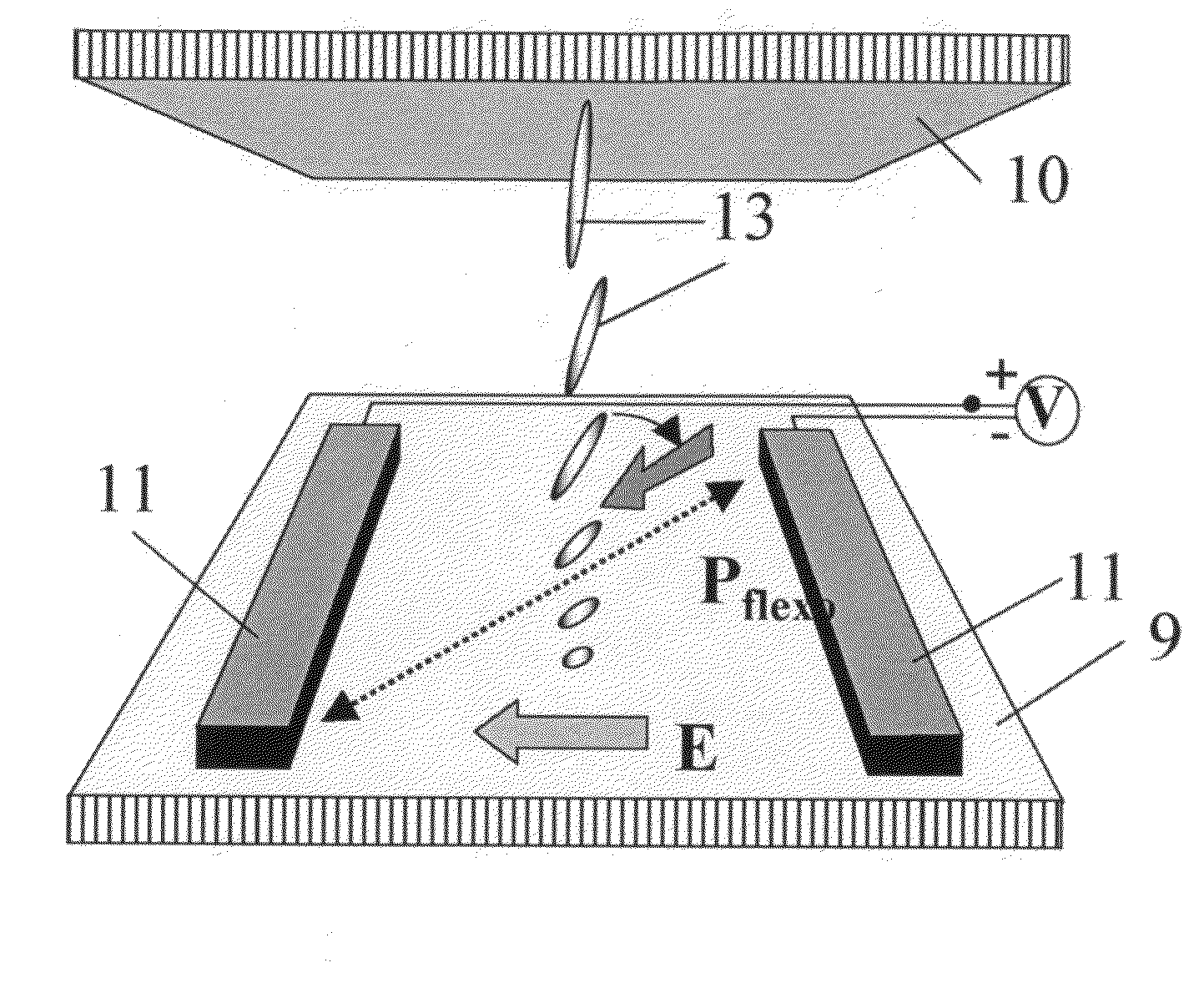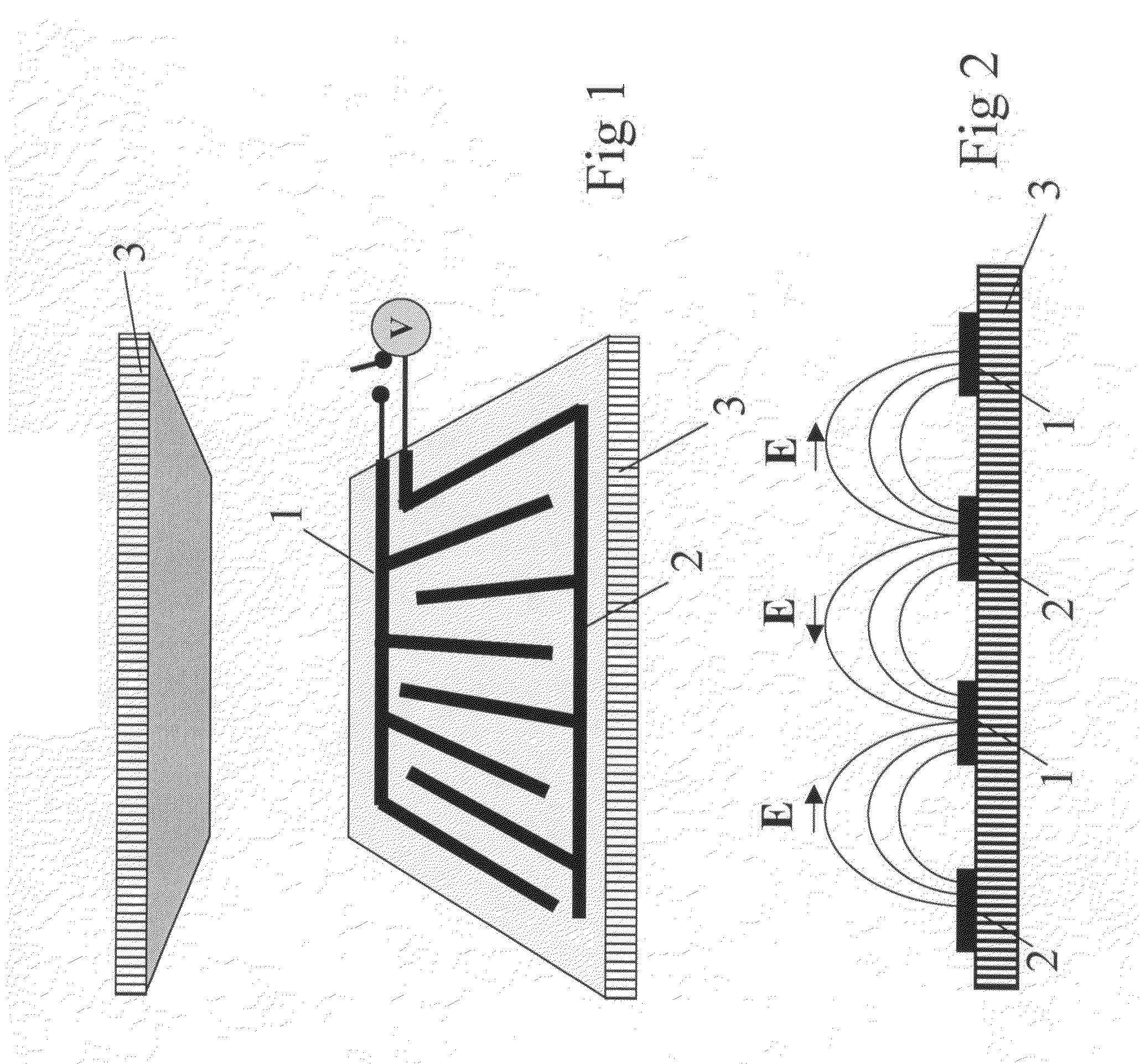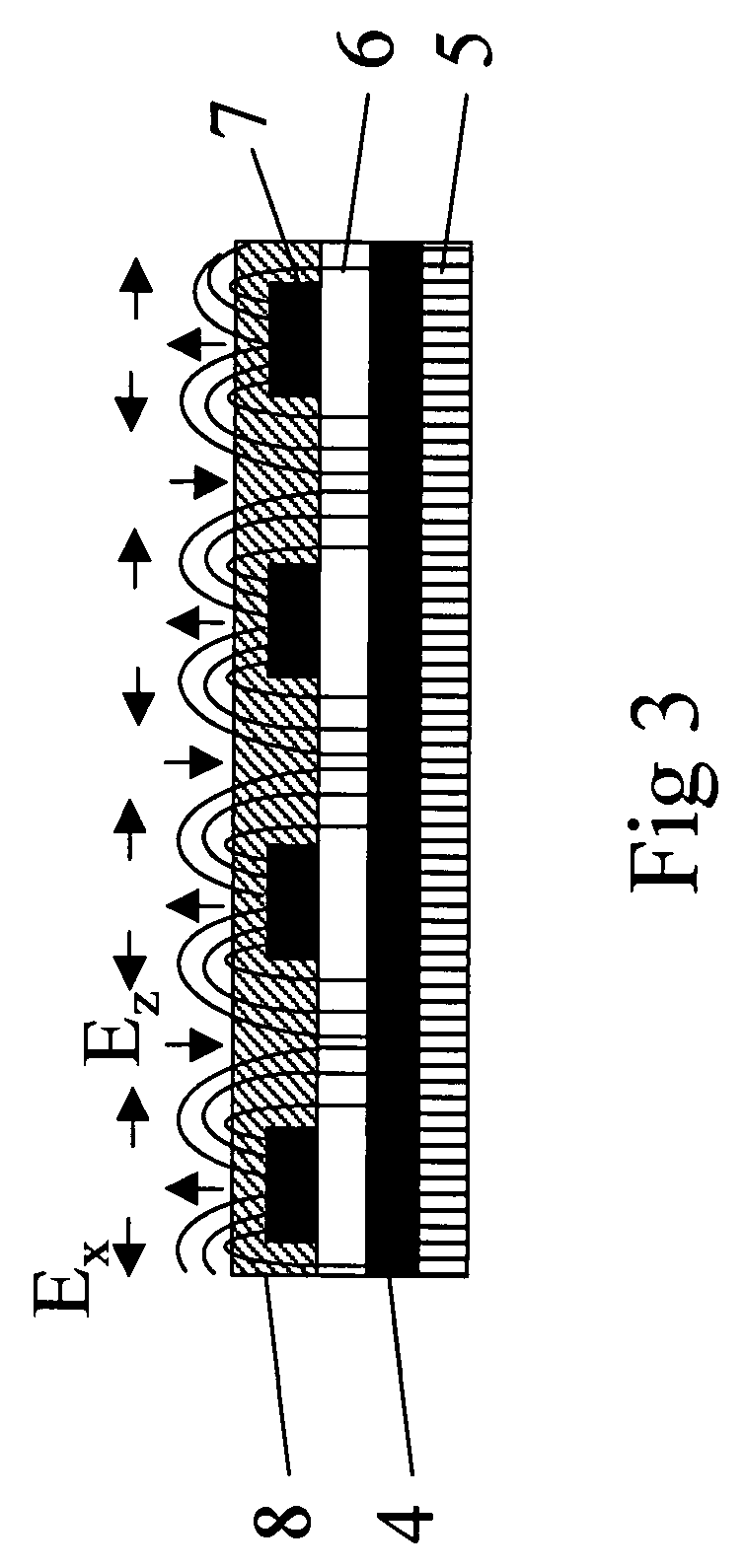Liquid crystal device
a liquid crystal device and liquid crystal technology, applied in the field of liquid crystal devices, can solve the problems of long field-off time mentioned above, not solved, shortening the switching time of the display operating in ips-mode for generating high-quality moving images, etc., and shortening the fall time of the electro-optic response. , the effect of fast in-plane switching
- Summary
- Abstract
- Description
- Claims
- Application Information
AI Technical Summary
Benefits of technology
Problems solved by technology
Method used
Image
Examples
example 1
Cell Comprising Bulk Layer with Hybrid Alignment (HAN) and Interdigitated Electrodes
[0128]A sandwich cell (FIG. 20) comprising two parallel glass substrates 9 and 10 forming a cell gap of about 2 μm was used. An interdigitated electrode pattern 11 (illustrated in FIG. 1) were provided on the inner surface of one of the substrates 9 (single-sided device). The distance between adjacent electrodes was about 20 μm.
[0129]A first alignment layer 12 consisting of Nissan SE-2170 was deposited on the electrode pattern 11 and rubbed parallel to the electrode pattern 11 for promoting an uniform planar alignment of a liquid crystal bulk layer, comprising liquid crystal molecules 13, provided in the cell gap.
[0130]A second alignment layer 14 consisting of Nissan SE1211, promoting homeotropic alignment, was deposited on the inner surface of the other substrate 10.
[0131]The cell gap was filled with the nematic liquid crystalline material MLC 16000-000 (supplied by Merck) possessing positive dielec...
example 2
Cell Comprising Bulk Layer with Hybrid Alignment (HAN) and Interdigitated Electrodes
[0136]The same type of sandwich cell was used in this example as in the Example 1, but the HAN texture was reversed (FIG. 26). Thus, the alignment induced by the first alignment layer 18 at the substrate 15 bearing the electrode pattern 17 was homeotropic and the alignment induced by the second alignment layer 20 at the counter substrate 16 was planar, as shown in the FIG. 26 and FIG. 27.
[0137]In addition, the cell was filled with another nematic liquid crystalline material 19, MDA-05-187 (supplied by Merck) possessing a negative dielectric anisotropy (Δ∈<0.
[0138]Since the bend deformation is localized at the sub-strate 15 bearing the electrode pattern 17 and since MDA-05-187 exhibits a negative dielectric anisotropy, the strongest flexoelectric polarization (Pflexo) is here localized where the bend deformation is dominant, i.e. at the substrate 15 bearing the electrode pattern 17 (FIG. 26). The doub...
example 3
Cell Comprising Chiral Smectic Alignment Layer and Interdigitated Electrodes
[0140]The cell used in this example (FIG. 32) had the same structure as the one used in Example 1. However, in this example, both inner surfaces of the substrates 21 and 22 were coated with alignment layers (not shown) comprising Nissan SE-2170 unidirectionally rubbed along the electrodes 23 promoting a quasi-planar alignment with pretilt θa.
[0141]On top of the alignment layer covering the electrode pattern 23, a thin film of ferroelectric liquid crystal polymer (FLCP), more specifically a ferroelectric side-chain polysiloxane, (not shown) was deposited. The FLCP layer had a molecular tilt θb and was aligned in bookshelf geometry, i.e. with smectic layers perpendicular to the substrate surface 21.
[0142]The cell gap was filled with an in-house prepared nematic liquid crystalline material 24 possessing a negative dielectric anisotropy (Δ∈<0) and being immiscible (insoluble) in the FLCP.
[0143]The applied electr...
PUM
| Property | Measurement | Unit |
|---|---|---|
| apex angle | aaaaa | aaaaa |
| angle | aaaaa | aaaaa |
| distance | aaaaa | aaaaa |
Abstract
Description
Claims
Application Information
 Login to View More
Login to View More - R&D
- Intellectual Property
- Life Sciences
- Materials
- Tech Scout
- Unparalleled Data Quality
- Higher Quality Content
- 60% Fewer Hallucinations
Browse by: Latest US Patents, China's latest patents, Technical Efficacy Thesaurus, Application Domain, Technology Topic, Popular Technical Reports.
© 2025 PatSnap. All rights reserved.Legal|Privacy policy|Modern Slavery Act Transparency Statement|Sitemap|About US| Contact US: help@patsnap.com



